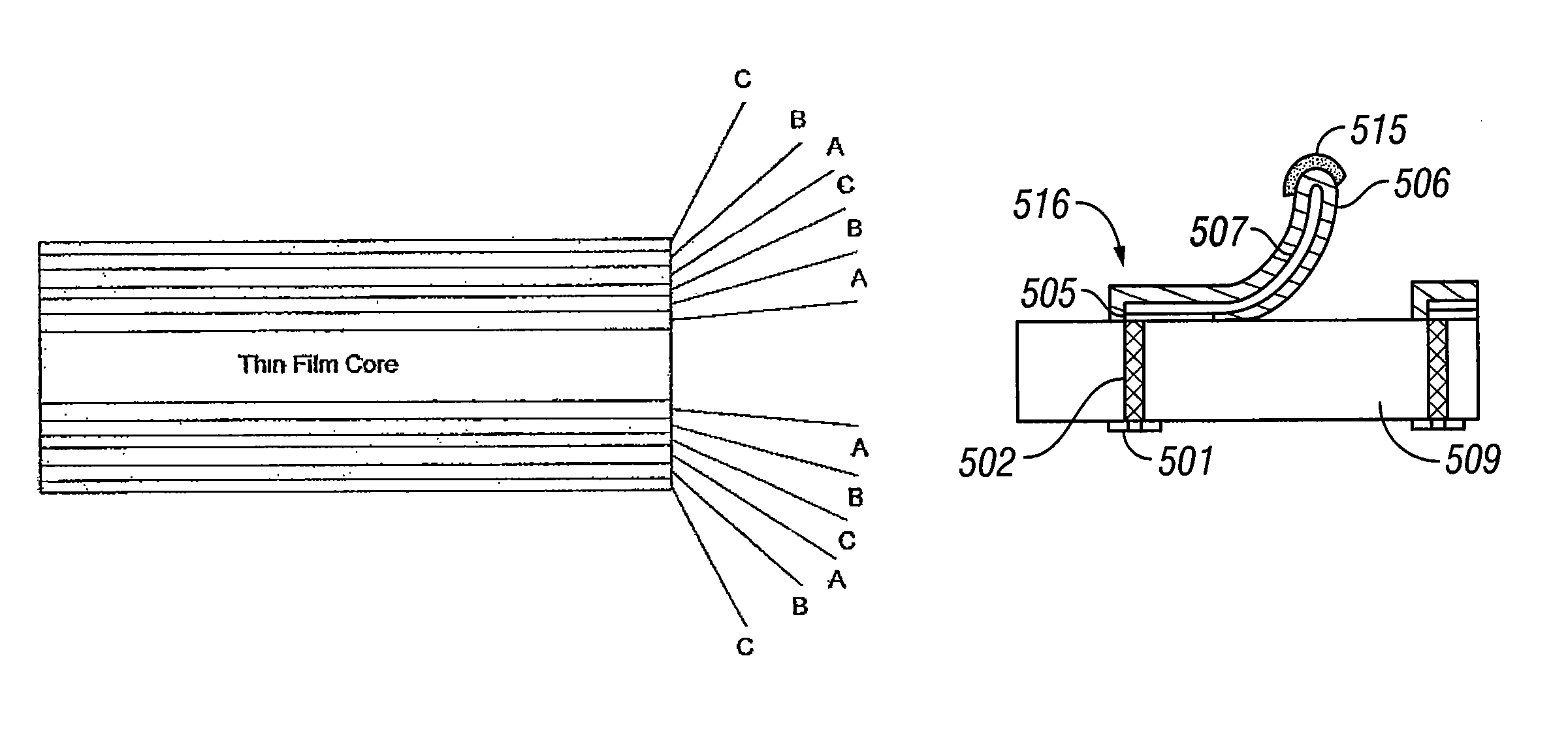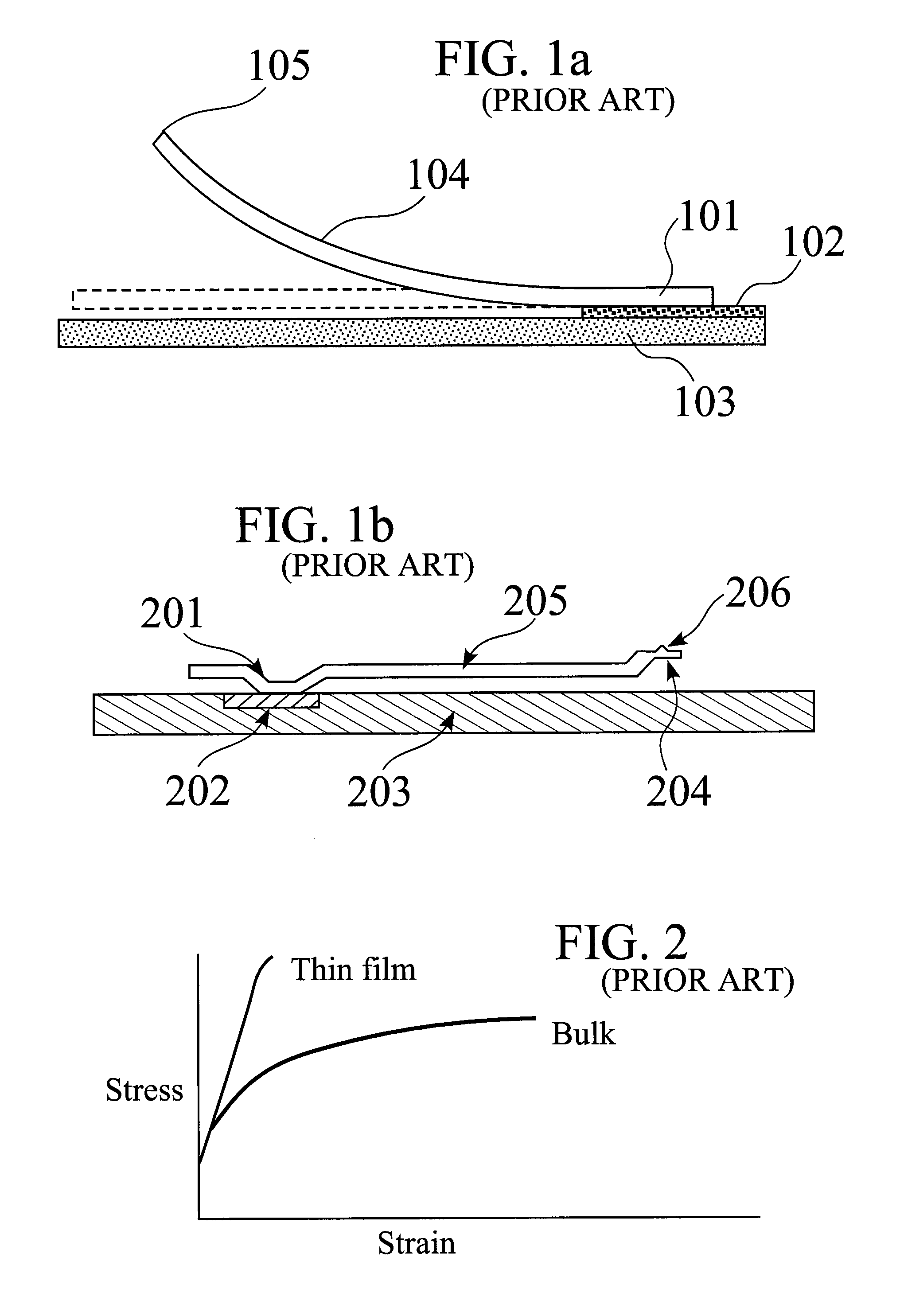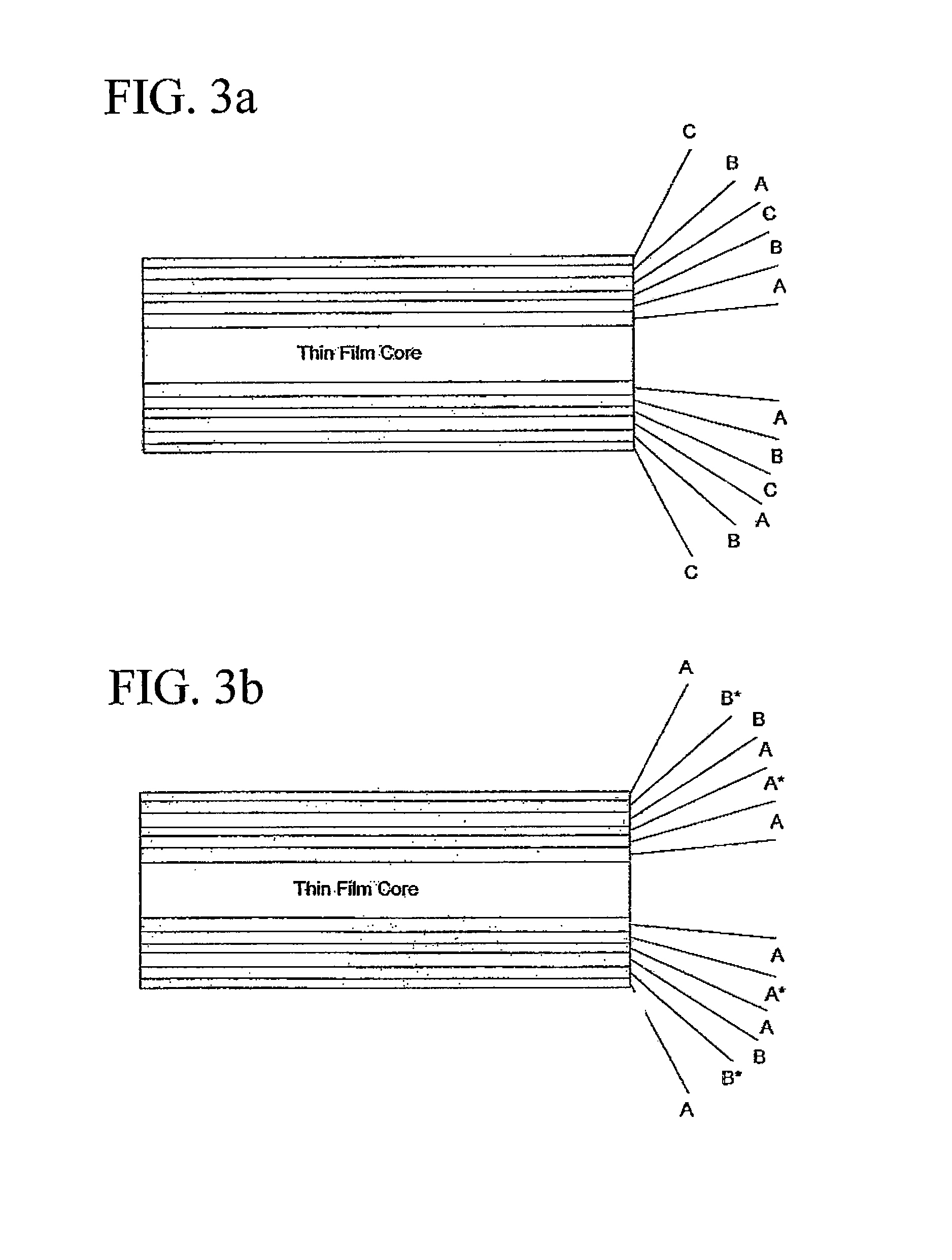Miniaturized contact spring
- Summary
- Abstract
- Description
- Claims
- Application Information
AI Technical Summary
Benefits of technology
Problems solved by technology
Method used
Image
Examples
Embodiment Construction
[0055]Miniaturized springs can be fabricated using thin film or discrete component fabrication technologies such as wire bonding. In general, for springs to perform satisfactorily in wide range of applications, the yield strength of the materials is required to be higher than the stresses applied to the springs during testing or burn-in, or in assembled packages. We have observed that many thin film stress metal springs are plastically deformed during testing because the spring material's yield strength is lower than the applied stress. A stress metal film typically comprises a strong core film composed of materials, such as molybdenum (Mo) or its alloys, tungsten (W) or its alloys, with additional overlying film coatings, such as nickel or nickel-cobalt (Ni—Co) alloy films. Some of these films are relatively thick, typically 4×103 to 104 nm in thickness, which is required in order to increase the force that needs to be applied by the spring to the contacting surface for establishin...
PUM
 Login to View More
Login to View More Abstract
Description
Claims
Application Information
 Login to View More
Login to View More - R&D
- Intellectual Property
- Life Sciences
- Materials
- Tech Scout
- Unparalleled Data Quality
- Higher Quality Content
- 60% Fewer Hallucinations
Browse by: Latest US Patents, China's latest patents, Technical Efficacy Thesaurus, Application Domain, Technology Topic, Popular Technical Reports.
© 2025 PatSnap. All rights reserved.Legal|Privacy policy|Modern Slavery Act Transparency Statement|Sitemap|About US| Contact US: help@patsnap.com



